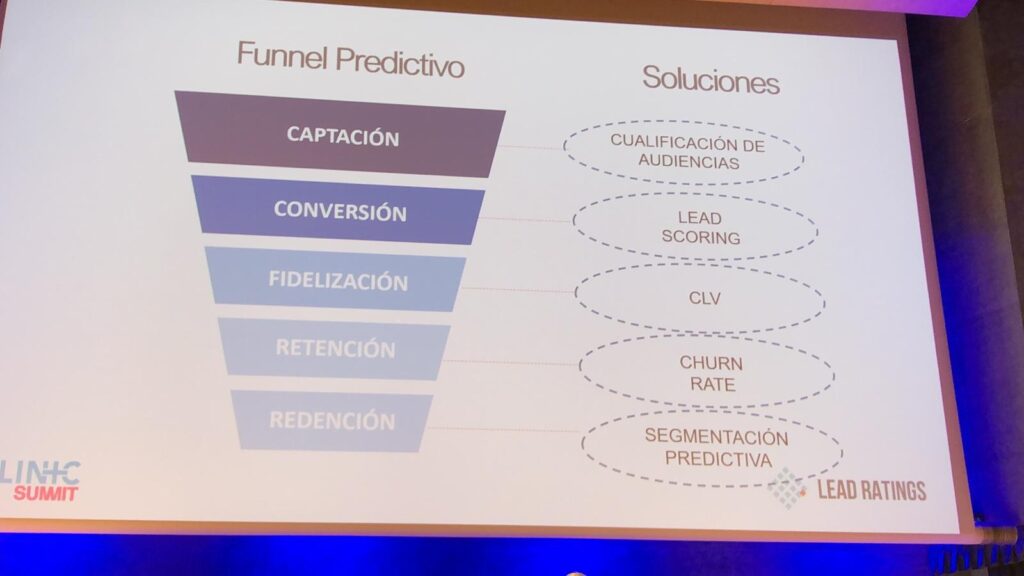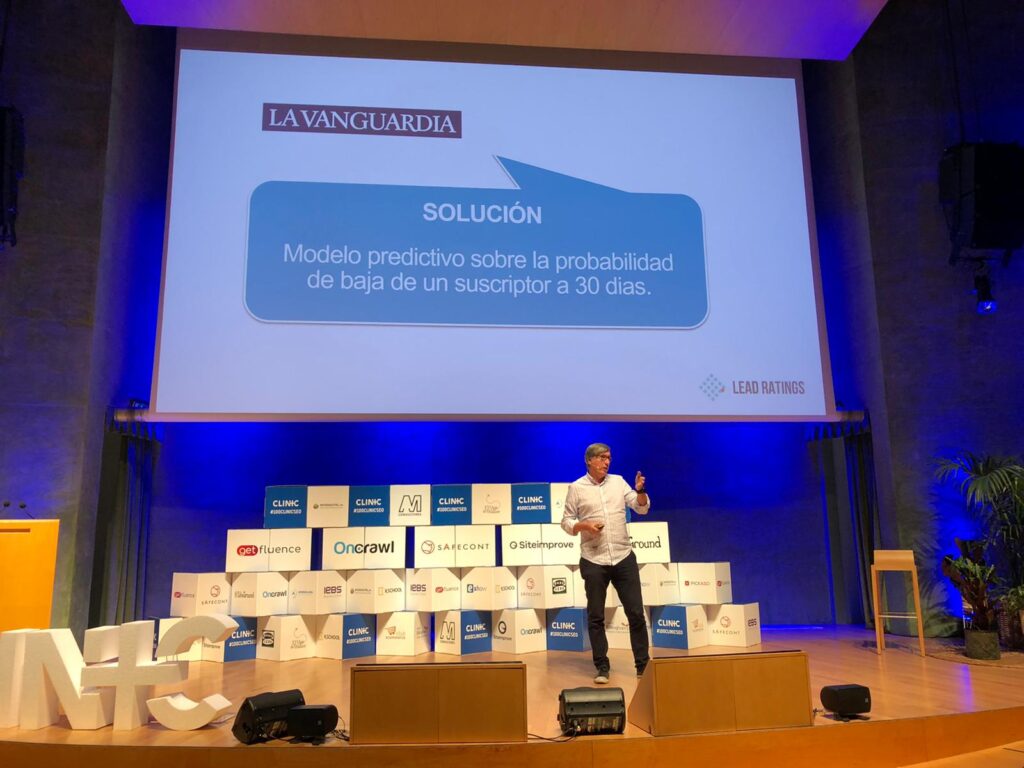Written by Fernando Maciá
Índice
Ricard Bonastre, CEO of Lead Ratings and former Managing Director of Emagister recommends two movies at the beginning of his talk: Brexit and The great hack. Later, he talks about how to improve our sales funnel with predictive marketing.
Predictive modeling: data and artificial intelligence
The funnel vs. the predictive funnel. A traditional funnel generates questions or uncertainties: which users do I treat first? Do I treat them all? am i going to lose this customer, and when?
With a predictive model based on data and artificial intelligence we can provide solutions to all these questions with audience qualification, lead scoring, churn rate, customer lifetime value or predictive segmentation.
Lead scoring
Example: Banco Sabadell’s website encourages users to contact the call center to qualify whether they are good mortgage customers or not. This creates a workload for all unqualified users. It’s a problem because we don’t prioritize the most likely ones. We would do this through a predictive lead scoring model to treat leads earlier or better according to their probability of conversion. It is scalable.
Audience qualification
Another example: UNIR. How to capture leads similar to the ones that have the highest conversion? The audience qualification model integrated with Analytics and Facebook allows you to identify which user profiles have a high conversion probability score.
Customer value calculation
Loyalty: Natzir Turrado appears on screen. Most e-commerce focuses on acquisition and not so much on loyalty. Can we know how many times this user will buy from me? I can analyze user behavior and calculate customer lifetime value, over the time frame you want to analyze. An algorithm can predict anything it can observe. If we give you the data, you can do it.
Churn rate calculation
Subscription Club: La Vanguardia. How can I know which users are most likely to unsubscribe? The churn rate model allows you to measure the 30-day churn probability. Segment high-risk users and we can also focus on those who would provide the most value. Behind predictive marketing is the fact that the user demands personalization. We are tired of always being treated the same.
Customer redemption model
Imaginarium has a huge database, but it is not a recurring purchase, not even monthly. You have many inactive users. Who do we send the catalog to? We can analyze the entire base and look for people with longer-term historical analysis. It is a model for companies that do not have a high recurrence. How do I know they will buy toys from me again? These are uncertainties about the conversion funnel. It is not all about capturing. We must exploit the database. With a high-value customer redemption model, we can segment more profitable customers.
What do I need to apply it successfully?
- Data. It does not work with small companies, although it is not big data.
- Technology: algorithms can be assembled via API.
- But above all, knowing what we are going to do with the prediction. The project fails when the client does not know what to do with the predictive model.
If the data are consistent, the projects work. But they are often not well applied.
If you don’t know what to do with a predictive model, you might as well live in ignorance. Decide where you are going to predict and the actionability of that prediction.


